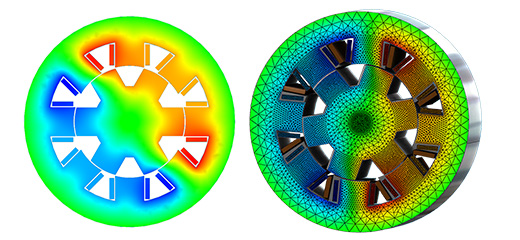
Mit dem steigenden Interesse an Elektrofahrrädern (E-Bikes) arbeitet die Elektrofahrradindustrie daran, die Motorleistung für eine verbesserte Effizienz und Stabilität zu optimieren. Nehmen Sie an unserem bevorstehenden Webinar teil, während wir uns mit dem modernen Design und der Analyse von Permanentmagnetmotoren befassen, die speziell für E-Bike-Anwendungen maßgeschneidert sind und die fortschrittliche EMWorks-Simulationssoftware nutzen.
Unsere Forschung konzentriert sich auf wichtige Motorparameter, einschließlich Polzahl, Wicklungsanordnung und Magnetform, und zeigt, wie eine strategische Optimierung zu einer signifikanten Reduzierung des Rastmoments und der Momentrippel führt. Erleben Sie aus erster Hand, wie diese Fortschritte die Effizienz steigern, die Stabilität verbessern und den Lärm in E-Bike-Motoren minimieren, und so den Weg für eine grünere und nachhaltigere Zukunft für die elektrische Mobilität ebnen."

